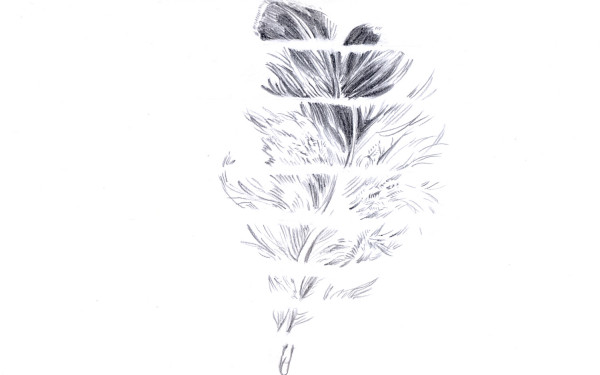Teaching Justice for Missing and Murdered Indigenous Women
Centre for Gender Advocacy’s Teach-In Highlights Injustices Facing Canada’s Indigenous Women
Originally intended to be an information session regarding Indigenous women in Canada, last Tuesday night, the Centre for Gender Advocacy became a space for teaching, sharing and healing.
Jonel Beauvais is a Mohawk woman from Akwesasne Nation. She just recently returned from Standing Rock, where she joined hundreds of First Nations opposing pipelines and devastation in North Dakota.
Beauvais was one speaker who participated in a teach-in about Missing and Murdered Indigenous Women in Canada. Missing Justice, a grassroots organization at Concordia that focuses on seeking justice for Indigenous women, organized the teach-in at the centre located on Concordia’s downtown campus.
Community First
Beauvais stood up and asked the room what words came to mind when they thought of community. Their answers ranged from family, food, home, safety, and ceremony. The group wrote the words on a piece of paper and placed them in the middle of the room.
Beauvais asked for volunteers.
The first four participants represented Indigenous children. They sat on the floor, around the paper.
Row by row, groups were added to represent a whole and healthy Indigenous community, with mothers surrounding the children, followed by aunts and grandmothers, and finally the men. The volunteers placed their hands on one another’s shoulders as a symbol of connection and kinship.
Beauvais was leading a traditional circle teaching, an exercise taught by many Indigenous mentors across the country. It is a way for participants to feel a breath of the immensity of what Indigenous communities have had to experience for generations. The exercise is used to explain how organized colonization and institutionalized oppression has infected the well being of many nations.
“Through colonization, we lost our sense of identity, culture and community,” Beauvais said. She picked up the paper and ripped it to shreds. Words like place, love, and support fell in pieces to the ground.
“The residential school system […] took our children,” Beauvais explained. She asked the volunteers in the middle of the circle to leave.
“How do you feel without your children?” she asked the others. Nervous eyes started to fill with tears.
“Without their children, we lost the strength of our women.” The women left the circle.
The room, now filled with crying participants, began to understand the story that was being told. The next row was asked to leave—the men were the only ones left standing.
“Our men were supposed to protect their communities; their women, their land. They once felt proud and now many of them are lost,” she explained.
Facing the Facts
Chantel Henderson and Chelsea Obodoechina, representatives from Missing Justice, facilitated the teach-in. They used the discussion to shed light on how perpetuating stereotypes in the media, and lack of appropriate action from the police contribute to the violence that Indigenous women face.
“I went missing when I was a child, I went missing when I was 16, I went missing when I was 20,” Henderson disclosed. “It got to a point where I thought: enough’s enough.”
She used her own experiences as an Indigenous woman who has gone missing and grew up in the child-welfare system to explain the unjust obstacles that many Indigenous people face.
“I went missing when I was a child, I went missing when I was 16, I went missing when I was 20. It got to a point where I thought: enough’s enough.” – Chantel Henderson, Missing Justice representative
“More than 80 per cent of children in the child-welfare system in Manitoba are native,” she said. A report from the Canadian Child Welfare Research portal elaborated that in Manitoba, 87 per cent of the children in care are Indigenous—the highest proportion of all Canadian provinces.
She spoke about how the loss of land and culture, implementation of residential schools and the removal of Indigenous children from families have played a role in disempowering women.
“Did you know that native women didn’t get the right to vote until 1960?” she asked.
She also highlighted the heightened risk that Indigenous women face when it comes to violence. Statistics Canada found in 2004 that Indigenous women above the age of 15 are 3.5 times more likely to experience violence than non-Indigenous women.
Henderson explained how for Indigenous communities, police have been a source of danger, rather than a place of security. When women are murdered or missing, communities often receive little follow-up from the police.
“The police don’t take missing persons reports of native women seriously,” Henderson explained. “Especially with sex workers.”
This is highlighted by a high-profile investigation conducted by Radio-Canada’s Enquête in 2015, which found numerous reports of abuse by Sûreté du Québec officers toward Indigenous women in Val-d’Or.
In January, the federal government said they would expand the inquiry into Missing and Murdered Indigenous Women to include more than the slated 1,200 existing cases of abuse from the past 30 years.
Obodoechina furthered Tuesday’s discussion to include mainstream media’s role in perpetuating stereotypes against Indigenous people.
“We live in a mediated society,” she said. “It can be a great source of information and of misinformation.” She used examples like old dime novels and Wild West shows, to explain how many non-Indigenous people came to think about Indigenous culture.
On Tuesday, Oct. 4, there will be a march for Murdered and Missing Indigenous Women at 6:00 p.m. at Place Émilie-Gamelin. This is the 11th annual memorial march and vigil to raise awareness and honour the approximate 1,200 who have gone missing or been murdered between 1980 and 2012—although the Native Women’s Association of Canada estimates the number is as high as 4,000.

web_900_675_90.jpg)
_600_832_s.png)

_600_375_90_s_c1.jpg)
1_600_375_90_s_c1.jpg)
